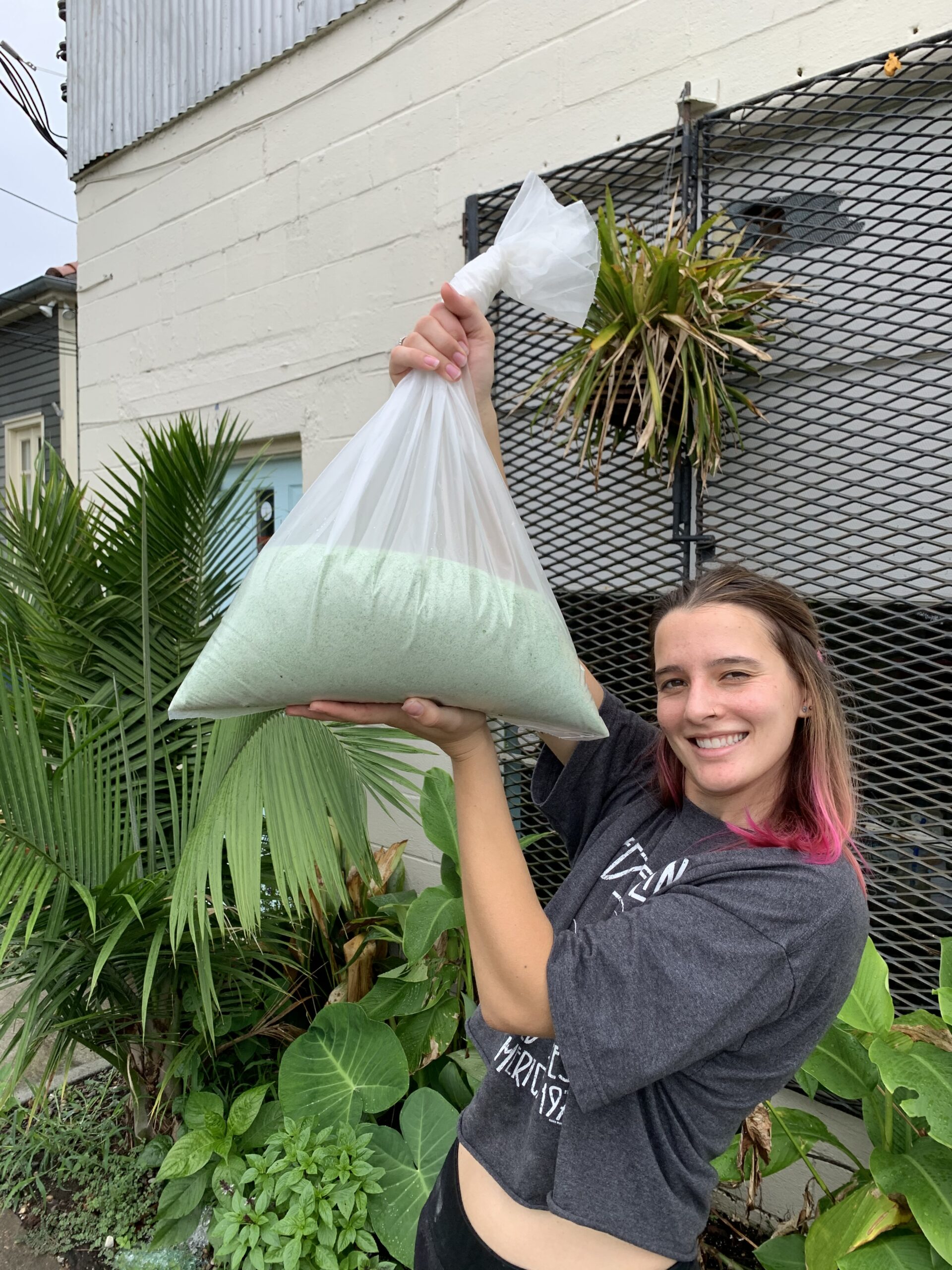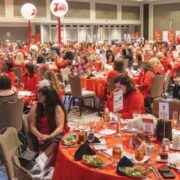Glass Half Full: More Than Glass Recycling

by Leah Draffen
IF THERE’S ONE THING New Orleanians are good at, it’s having a drink.
Whether it’s a glass of wine on a Wednesday, a local brew on a Friday, or a little Champagne on a Sunday, after casually finishing off a bottle, we may think little about where that bottle goes after it’s tossed in the trash bin. Yet, Max Steitz and Franziska Trautmann were thinking about that bottle—and all of the other glassware landing in New Orleans’ garbage.
“We started the Glass Half Full project in a backyard as seniors at Tulane. We were sitting around complaining about the lack of recycling options in our city and specifically glass ending up in a landfill. We began researching a possible solution for the problem,” says Max. “We found that the solution for recycling glass and diverting it from our landfills could also solve a whole host of problems our city is facing like coastal erosion, coastal land loss, disaster relief sandbags and other flood protection measures.”
He adds, “The fix was and is to take glass and recycle it back into sand locally, transparently and accessibly. Once we got through the research side of things, we jumped into action. We kind of just threw ourselves and everything we had at this issue.”

Max and Franziska along with the help of other students reached out to the community to see if there was interest in glass recycling. In true New Orleans fashion, the love was there. “Our city supported it a million times more than we could have ever imagined.”
After a fundraiser, Max and his team began sifting through trash and recycling glass one bottle at a time. Using a third-hand machine that they brought from rural Louisiana, the group would crush bottles one by one then sifting it to get soft, beach-like sand. At the time, it was just Max, Franziska and other Tulane students doing the work in that borrowed backyard where the idea began.
“We outgrew the backyard pretty quickly, but the pandemic shut us down for a couple months. After opening back up, we rented out a warehouse in Uptown, but again, we quickly maxed out operational capacity. We then secured a second location in New Orleans East where we have the space to crush, process, sift and distribute our product.”
The steps leading to Glass Half Full’s usable product begins with collection and sorting. Glass Half Full provide a drop-off location at 3935 Louisa Street. The recycled glass products are then sorted by color and any metal or plastic parts are removed before pulverizing and crushing begins. After the glass is crushed, the sand, glass cullet and labels are sorted and separated. Lastly, the sand and cullet are used in many ways including glass products, disaster relief sandbags and more.

Max explains, “With the sand we create, we aim to provide an alternative to harmful sand extraction techniques like dredging and mining. These methods disrupt local ecosystems and contribute to the coastal erosion crisis.”
Partnering with coastal preservation entities that study coastal erosion on a day to day basis, Glass Half Full is also learning where and how their sand can help rebuild Louisiana’s coast. “We want to understand that side of things. Sand is used in just about everything from water filtration to our toothpaste, roads and buildings. Being able to substitute our sand is relatively easily so we want to work with different groups to see where we’re we can be most helpful.”
Taking our glass waste and turning it into a usable product that solves multiple problems sounds like a win- win for our community and environment. Supporters near and far agree. This grassroots project would not have grown into what it is today without the help of its 100 to 150 volunteers from all around Louisiana. “We operate off small dollar donations and our volunteers,” adds Max. “It is growing into something that I hope will become much larger than us.
“It has been really cool to see how much the city and the state care about this problem. We want to spread the word that the city does and can recycle their glass now. We’re fighting for this city and hope to not only take care of the city’s glass, but ultimately our state’s.”
Businesses, organizations and residents can drop off glass at 3935 Louisa Street on Mondays, Wednesdays and Saturdays from 9am to 6pm. To volunteer, donate and learn more, visit glasshalffullnola.org.




